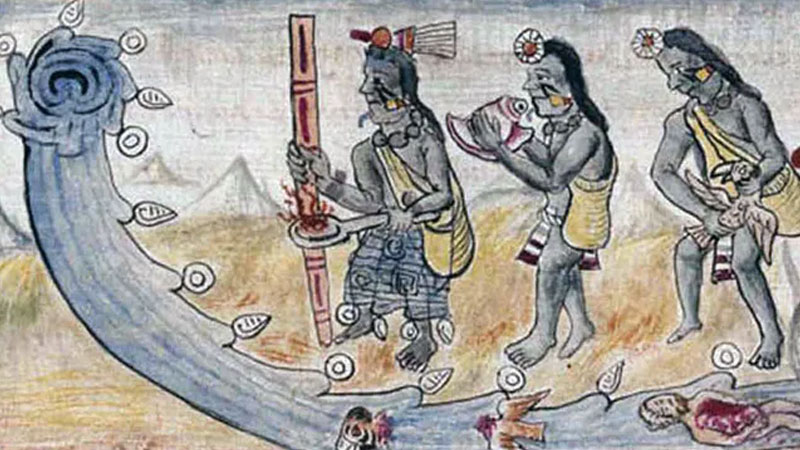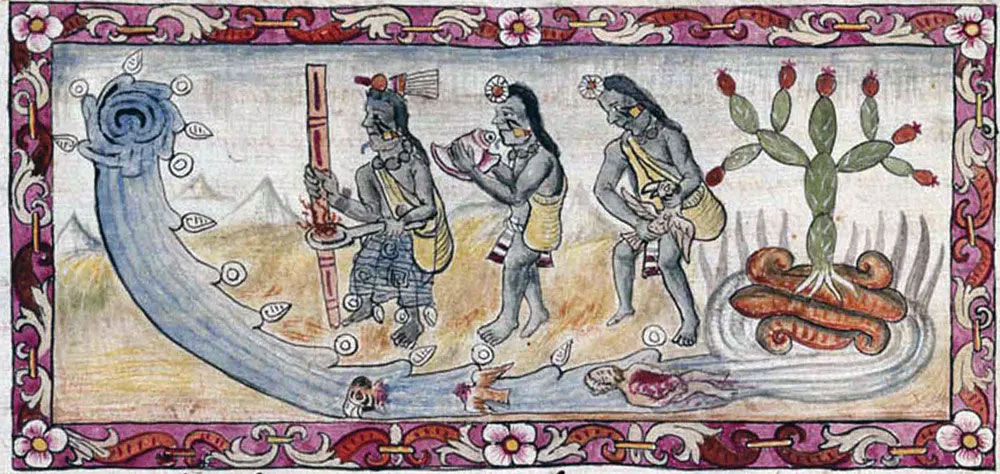
The Great Flood was supposedly sent by God or the gods in order to destroy civilization as an act of divine punishment. This story is a pervasive theme among many cultural myths and is perhaps best known in the biblical story of Noah.
But despite the fact that Noah’s story of the great flood may be one of the most famous and well-known, it is not the oldest, and it is certainly not the only one.
There are several other versions, perhaps less famous, such as stories of Matsya in the Hindu Puranas, Deucalion in Greek mythology and, according to scholars, the oldest and “original” account of the great flood is described in the Epic of Gilgamesh by Utnapishtim, the Noah of ancient Sumeria.
This historical fact is clear evidence of how many of the world’s oldest cultures have stories that describe a great flood that devastated previous civilizations on Earth.
Interestingly, there is a great similarity between several of the flood myths, something that has led many authors and scholars to believe that they evolved or influenced each other.
There are stories of a great flood in almost every ancient culture on Earth, but mainstream scholars are divided in opinion about whether or not this event occurred on Earth.
However, scientists recognize that in the distant past, thousands of years ago, a catastrophic flood occurred on Earth, but most scientists deny that there was a massive flood, the great flood that covered large parts of the planet.
The Sumerian Nippur tablet is believed to describe the earliest tale of the Great Flood and the creation of humans and animals on Earth and records the names of antediluvian cities and their respective rulers.
The Genesis of Eridu would have been recorded in writing on the tablet around 2,300 BC and is considered to be the first known account of the great flood and many authors and scholars believe that the Sumerian accounts of a great flood ended up giving rise to the most popular myths about the flood, as described in the Bible.
However, if this is true, how did the story of a great flood reach Mesoamerica thousands of years ago?
The Flood Stories of the Aztecs

There are several accounts of the story of the Aztec Flood, but the authors argue that the most famous of all is that of Nota, the Aztec version of Noah.
“When the Age of the Sun came, 400 years passed. Then came 200 years, then 76. Then all humanity was lost and drowned and turned into fish. The water and the sky came closer. In a single day, all was lost. But before the flood began, Titlachahuan had warned the man Nota and his wife Nena, saying: ‘Do not make pulque (alcoholic drink made from the fermented juice of the agave) any more, but dig a large cypress tree, into which you will enter in the month of Tozoztli. The waters shall approach the sky.’ They went in, and when Titlachahuan had closed them, he said to the man, ‘You shall eat only one ear of corn, and your wife one more as well.’ And when they had eaten one ear of corn, they prepared to leave, as the water was calm.” – Ancient Aztec document Codex Chimalpopoca, translated by Abbé Charles Étienne Brasseur de Bourbourg.
If we take a look at the Five Suns, the doctrine of the Aztecs and other Nahua peoples, we will find the following epochs of creations and destructions:
- Nahui-Ocelotl (Sun of the Jaguar) – The inhabitants were giants who were devoured by jaguars and the world was destroyed.
- Nahui-Ehécatl (Sun of Wind) – This world was destroyed by hurricanes and the inhabitants were turned into monkeys.
- Nahui-Quiahuitl (Sun of Rain) – The inhabitants were destroyed by a rain of fire. Only the birds survived (or the inhabitants survived by becoming birds).
- Nahui-Atl (Sun of Water) – This world was flooded, turning the inhabitants into fish. A couple escaped, but were turned into dogs.
- Nahui-Ollin (Sun of Earthquake) – We are the inhabitants of this world that will be destroyed by earthquakes (or a large earthquake).
The fourth, Nahui-Atl, describes what many believe to be a great flood: this world was flooded, turning the inhabitants into fish. A couple escaped but were turned into dogs.
“The fourth sun, Nahui-Atl, ‘Four Waters’, ended in a gigantic flood that lasted 52 years. It is said that only one man and one woman survived, sheltering in a huge cypress tree. But they were turned into dogs by Tezcatlipoca, whose orders had disobeyed.” – Encyclopedia Britannica.
After Nahui-Atl, comes Nahui-Ollin, the world we live in today and which will be destroyed by a great earthquake, according to Aztec mythology.
Different versions of the Mesoamerican floods, especially those of the Aztec people, say that after the great flood, there were no survivors, and creation had to start from the beginning, while other accounts describe how present-day humans are descended from a small number of survivors.
Giants lived on Earth before the flood, and Xelhua was one of the seven giants in Aztec mythology who escaped the flood by climbing the mountain of Tlaloc in the earthly paradise and later built the Great Pyramid of Cholula.
“Before the great flood that occurred 4,800 years after the creation of the world, the country of Anahuac was inhabited by giants, all of whom perished in the flood or were turned into fish, except seven who fled into caves. When the waters receded, one of the giants, the great Xelhua, nicknamed “Architect”, traveled to Cholula, where, as a memorial to Tlaloc, who had served as a refuge for himself and his six brothers, he built an artificial hill, in the form of a a pyramid…”
He ordered bricks to be manufactured in the province of Tlalmanalco, at the foot of the Sierra de Cecotl, and to transport them to Cholula in a line of men who passed them from hand to hand. The gods saw, in anger, a building whose top should reach the clouds. Angered by Xelhua’s daring attempt, they set fire to the pyramid. Countless workers perished. Work was stopped, and the monument was later dedicated to Quetzalcoatl.
“Xelhua was a giant from the ‘time of the universal flood’. He was one of the seven giants of Aztec culture. Before the pyramid in Mesoamerica was completed, ‘fire fell upon it, causing the death of its builders and the abandonment of work ‘”, wrote Dominican monk Diego Duran.




















